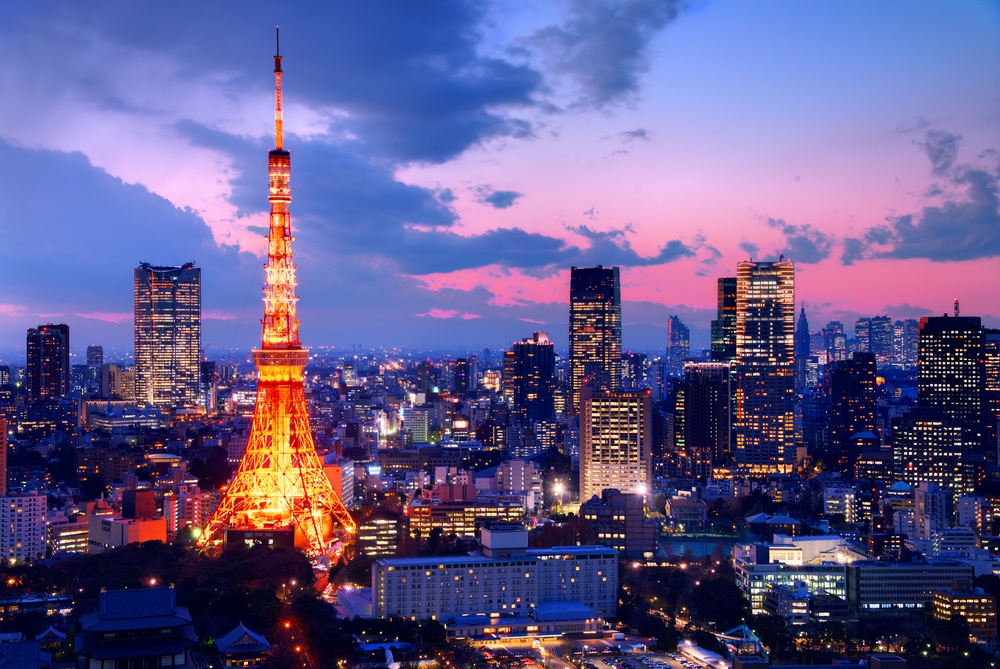

Tokyo Tower, at 333 meters, has stood as an iconic landmark and symbol of Japan's post-war rebirth and modernization since its completion in 1958. Situated in the heart of Tokyo, this structure draws inspiration from Paris's Eiffel Tower and has since become an enduring tourist attraction, with its red and white paint distinguishing it against the city's skyline.
The tower was originally built for broadcasting purposes, to support the antenna for television broadcasting. However, tourism was a key consideration in its design, with the tower incorporating observation decks that offer panoramic views of Tokyo. As television and radio broadcasts evolved, Tokyo Tower's function expanded to include tourism and entertainment. It houses two observation decks: the Main Observatory at 150 meters and the Top Deck at 250 meters, attracting millions of visitors each year.
In the years following its opening, Tokyo Tower quickly rose to fame, becoming a must-visit for any tourist in Tokyo. By the 1980s, the tower was not only a symbol of the city but also a major player in Tokyo's tourism landscape. The surrounding area developed with the growth in tourism, including parks, shrines, and commercial facilities that enhanced the appeal of Tokyo Tower as a tourist destination.
The turn of the millennium saw an emphasis on immersive and interactive visitor experiences. Tokyo Tower has embraced this trend by introducing attractions like the "FootTown" four-story building at the base, offering various restaurants, shops, and museums. It includes a wax museum, a Guinness World Records Museum, and an indoor amusement park, ensuring that Tokyo Tower remains a versatile attraction for all ages.
One of the latest additions, "Top Deck Tour," offers visitors a premium experience with a guided tour, complete with interactive elements and advanced technology like multilingual touch screen panels, ensuring a modern and engaging experience that highlights the changes in tourism trends towards technology-driven experiences.
Furthermore, seasonal events and lighting displays have become increasingly popular, with Tokyo Tower hosting mesmerizing illuminations that color the tower seasonally, thus attracting repeat domestic and international visitors.
With the digital age, Tokyo Tower has also embraced online platforms to enhance its global appeal. It offers virtual tours and live camera feeds, allowing people around the world to experience the attraction online, tapping into the growing trend of virtual tourism.
In response to the rising interest in sustainable tourism, measures have been introduced to reduce the environmental impact of Tokyo Tower's operations. These include using LED lights for its illuminations to reduce energy consumption and the use of eco-friendly materials in its facilities.
Tokyo Tower has remained a stalwart figure in Japan's tourism sector, expertly adapting to the changing times and consumer preferences. It not only upholds its role as a broadcasting tower but continues to innovate and appeal to visitors from across the globe. As tourism trends evolve, Tokyo Tower is sure to adapt, maintaining its status as an enduring symbol of Tokyo and a beacon of Japan's hospitality and innovation in tourism.